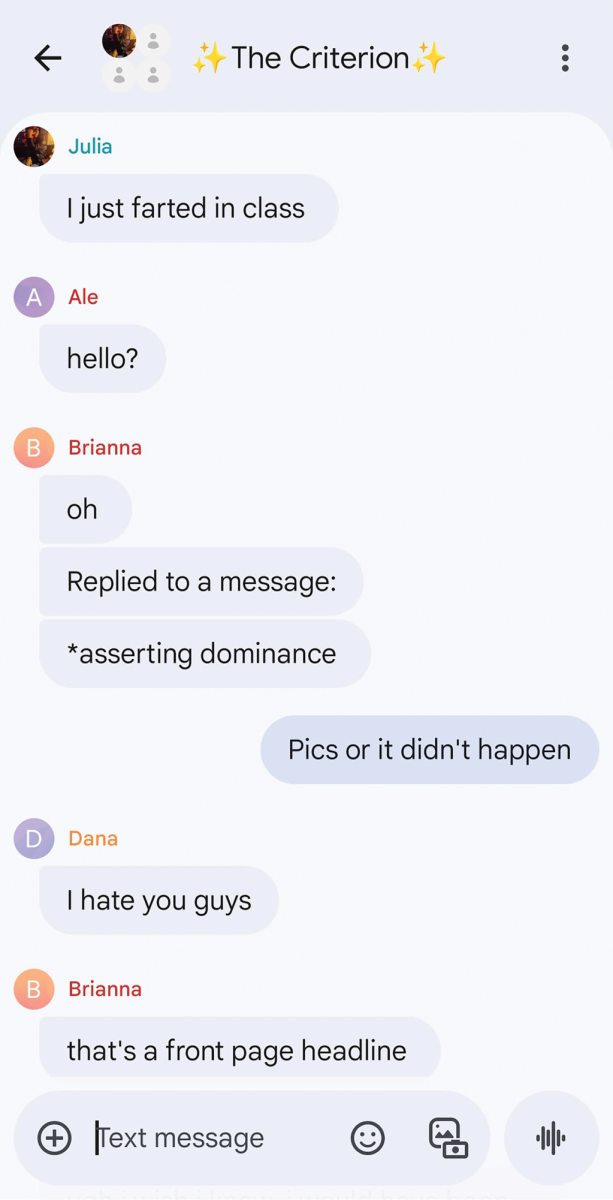The human body heats up to kill a virus that is polluting it. Perhaps the earth is doing the same; heating up to spare itself from destruction.
The effects of the climate crisis seem to continue to ravage the earth, and to those who still ‘don’t believe’ in climate change, they might not be paying attention to the statistics. The numbers are undeniable–something clearly isn’t right on our planet.
Indonesia will move its capital city because the current one is sinking. The world’s summers and winters continue to increase in temperature. Average wildlife populations have plummeted by 60% in the past forty years. There’s more carbon dioxide in the atmosphere than ever before in the history of mankind. Two-thirds of all extreme weather in the past twenty years can be attributed to humans’ influence. 120,000 square kilometers of tropical rainforest were leveled in 2018.
To be frank, that news sucks, doesn’t it?
Not only is the information atypical, the facts about the effects of the climate crisis seem almost apocalyptic.
But hope isn’t lost.
The good news is that the solutions we need for a carbon-free future already exist, it’s just a matter of implementing them.
In 2015, world leaders from 196 countries came together to pledge to reduce carbon emissions. At the time, only two countries did not join the agreement, and they were Syria and Nicaragua. However, United States President Donald Trump pulled out from the accord after being elected.
While this decision solely helps the green of peoples’ wallets at the expense of the green on the earth, many Americans have resisted. Leaders of businesses, cities, states, schools, and universities have pledged to continue to fight climate change with the We Are Still In movement.
In many cases of this movement, presidents/administrations of universities have amplified sustainability efforts on campus to mitigate climate problems.
So, are some of these environmentally conscious people Colorado Mesa University’s President, Tim Foster and the rest of CMU’s administration? Many students say no, but the school’s administration says yes.
“I think CMU has the means to be sustainable, but it is not a priority for the school,” says Jill Klinger, a CMU senior and president of the Sustainability Council. “Financially, we are capable of investing in recycling, composting, and other low- waste initiatives. Frankly, it is embarrassing that we as a school send 100% of our waste to the landfill. Recycling is seen as the responsibility of students, and there is currently only one part-time employee focused on recycling.”
“…our efforts simply don’t add up to the level of action that is required by the situation we are in. I can’t pretend to know why this is not prioritized–as it is at CU, DU, and CSU among others–I just know that we see very little administrative support,” Klinger went on to say.
And Klinger is not alone in her opinion. In fact, many people would say the same thing of CMU’s weak sustainability efforts.
“I wouldn’t consider Mesa to be a school that prioritizes sustainability because most of the efforts made so far have been successful only because of their economic benefits. I think Mesa could really benefit from prioritizing sustainability because I think the youth of today’s world tend to prioritize sustainability, and would like to see their school doing the same,” said Drew Bussanmas, the Special Projects Manager with the Sustainability Council.
CMU’s Public Relations Director, David Ludlam, spoke on behalf of the university about its current sustainability, along with future plans for reducing waste. One initiative that Ludlam mentioned was the school’s partnership with Coca-Cola.
“As we roll out the new partnership, there will be new receptacles/bins with messages on them about the importance of recycling. Coordination will occur with the Sustainability Council and CMU facilities on where they [the bins] should go,” Ludlam said.
The new partnership with Coca-Cola seems to be a way in which CMU looks to combat climate change from a local level, which is, of course, a step in the right direction.
It is noteworthy, however, that Coca-Cola isn’t particularly versed in sustainable practices, as they admitted to producing 3.3 million tons of plastic in 2017. The company has also been accused of depleting the wells of farmers and creating dehydration in various communities in order to get sufficient water for their own plants, as it takes almost three liters of water to make one liter of Coca-Cola.
“One of the attractive elements of the new partnership with Coca-Cola is their desire to collaborate on advancing sustainability on campus…Coca-Cola is meeting with the CMU Sustainability Council to discuss what initiatives they can explore together around recycling, reuse, ect in the years to come,” Ludlam said.
Unfortunately, to really make a legitimate difference, the Coca-Cola partnership isn’t enough. Luckily, there’s more that Ludlam mentioned that he thinks would classify the school as one with the environment’s best interest in mind.
“The CMU geothermal system is a world-class, one of a kind system. The novelty within the CMU geothermal systems are remarkable including the heat-sync exchanger using the natatorium and even irrigation drains in the summer months. The system is going to be expanded this summer, and to our knowledge, remains one of the most dynamic geothermal systems in Colorado,” Ludlam said.
David Ludlam later went on to mention that, “CMU has also engaged full conversion to LED lighting, implemented waterless urinals and dual flush toilets”.
The university also transitioned from “ammonia sourced, nitrogen based fertilizers to natural fertilizers sourced locally from Fruita, CO”.
Another recent high note for CMU was another Sustainability Council initiative that implemented reusable to-go boxes in the cafeteria.
“The program has exceeded expectations in terms of units distributed,” Ludlam said in regards to the reusable boxes.
While it is true that CMU does have some good things going that won’t impact the natural world negatively, it also lacks in many areas. Some of the more common criticisms are a widespread absence of accessibility to recycling, no compost, excessive usage of electricity, and an abundance of waste, to name a few.
CMU explained the general lack of recycling by claiming that, “Places with economies of scale (Boulder/Front Range) will have different programs and market access than places like Mesa County”.
But that isn’t entirely true.
Central High School (in Mesa County) was awarded a national recipient of the 2018 U.S. Department of Education Green Ribbon Schools Awards. Only two Colorado schools made the list, the other being Mackintosh Elementary in Littleton.
While the award is only given to elementary, middle, and high schools, it goes to show that Mesa County is not a valid limitation if a school wants to reduce its waste.
Central High School, based out of Grand Junction, was awarded as a Green Ribbon school by decreasing energy usage by 39 percent, decreased Greenhouse Gas Emissions by 42 percent, reduced water usage by 36 percent, and gets 58 percent of its electricity from solar panels on the school’s roof.
Recycling was a major initiative that Central took in becoming a Green Ribbon school.
In an interview with KKCO, Central science teacher PJ Janssen said that “We are running out of landfill space in Mesa County.”
While local high schools like Central are working to lessen their impact on the planet, it seems as if that simply isn’t a priority for CMU.
“…we have a lot of work to do on improvement before we can be compared to other Colorado universities that excel in sustainability efforts and environmental programs,” Drew Bussanmas said.
Other Colorado universities have taken serious steps towards enhancing eco-friendliness.
“By looking at other universities in Colorado like CSU and CU Boulder, we can see that there are lots more things a university can do to become more sustainable,” Bussanmas said.
Other than recycling, there are a plethora of ways that the school could make itself a campus that is less harsh on the planet than it is now. One example would be improving irrigation. Currently, the school’s fields are kept green with the city’s potable water. If CMU irrigated less and with untreated water, it could save large sums of both energy and water.
“Another area where Mesa could improve on sustainability is improving education and awareness of sustainability. Most people are lacking in their understanding of the importance of creating an eco-friendly, energy-efficient, environmentally conscious and sustainable infrastructure in our homes, cities and campuses,” Bussanmas continued.
Jill Klinger stressed the fact that CMU does have the money to invest in sustainability, which only pushes the question as to why they aren’t.
“Being a university student, I want to see that my school is committing to a progressive future of education and that they are listening to and trusting the students that they are educating,” Bussanmas said.
While Colorado Mesa University’s administration would likely argue that it is indeed taking the appropriate steps to combat the worsening effects of climate change, members of the Sustainability Council do not agree.
“Logistically, we are capable of implementing a Climate Action Plan and following through. Institutions of Higher Education cannot deny the climate crisis and maintain their integrity. As powerful institutions , they have the responsibility to lead the way towards solutions and make headway for the communities they are in. CMU has no such forward thinking plan,” Klinger said.
“Sadly, there are a lot of holes in CMU’s current state of eco-friendliness.”









